Growing a plant called “weed” may seem like a simple task. Although some cannabis strains can “make it” in less-than-ideal environments, you probably won’t be happy with the yields from these flowers. Expert cannabis cultivators use many techniques to ensure they get the max harvests from their crops.
A Helpful Few Tips On Growing Healthy Weed
Learning a few “tricks of the trichome trade” can massively improve your odds of growing healthy marijuana strains. Before planting a batch of weed seeds, be sure to review these expert cannabis tips to maximize your gains.
What To Look For In Healthy Seeds
The first step to growing robust cannabis is to choose viable weed seeds. Starting with solid genetics will decrease the odds of running into difficulties during the delicate seedling phase.
So, how do you know a cannabis seed is ready for germination? One feature to pay careful attention to is the color of your seeds. Healthy cannabis seeds should have a brown appearance with a few streaks of gray. Seeds that are white or green are probably too immature to develop taproots. Alternatively, seeds that are pitch black may be past their prime.
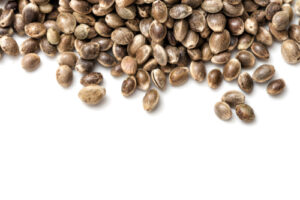
In addition to color, cultivators should test each weed seed’s strength by gently pressing them between their thumb and index finger. A strong seed should feel firm with slight pressure. By contrast, immature seeds will feel squishy, while old seeds may break.
It’s always best to examine weed seeds in person. However, if you can’t physically inspect these cannabis seeds, be sure you’re working with a reputable seed vendor. Look into the history and reviews for whatever company you’re considering working with. Also, see if the seeds you’re purchasing have a guaranteed germination rate.
For those interested in learning more about caring for cannabis seedlings, check out this previous International High Life guide.
How Essential Are Nutrients When Growing Cannabis?
While nutrients are essential for healthy cannabis growth, it’s common for newcomers to use too many of these supplements. This is especially true if you’re cultivating cannabis in soil rather than hydroponics. Even ordinary potting soil has many natural nutrients, thus reducing the need for excessive supplementation. However, since cannabis plants in hydroponics only come in contact with water, they are more prone to nutrient deficiencies.

In most cases, cannabis cultivators do fine with nitrogen, phosphorus, and potassium blends for soil-grown weed. Nitrogen is crucial during weed’s growth stage lasting from vegetation through early flowering. Once cannabis stops climbing and starts focusing on producing buds, it’s time to decrease nitrogen and increase phosphorus and potassium.
Cannabis cultivators may need less than the recommended nutrients to have solid results in their soil formula. Unless you know you’re dealing with a nutrient deficiency, less is usually more when adding these supplements to your daily schedule.
Also, new cultivators shouldn’t add too many amendments or fertilizers to their first soil grow. While these additions can produce fantastic organic weed, they are more advanced techniques. Only start experimenting with “living soil” formulations after you’ve mastered the basics of growing weed in loamy potting soil.
To learn more about choosing the right growing medium for weed, please read our complete 101 guide on soil for cannabis.
Be Wary Of Overwatering
Along with overfeeding, overwatering is one of the most common issues new cannabis cultivators run into. Yet again, the motto “less is more” applies to setting up a cannabis watering schedule. If the top layer of the soil doesn’t feel dry to touch, then there’s probably no need for water just yet.
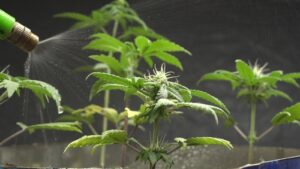
The top two signs of overwatering include dark, droopy leaves and stunted growth. Plants with too much water are also more susceptible to mold and root rot. If you notice these warning signs, you should review your watering schedule and double-check your pot’s drainage. You may also want to consider adding aeration to your soil with additions like perlite.
Those who can’t get the hang of watering their cannabis seeds may want to invest in a soil-moisture meter. These devices help give you an accurate measure of how much water is in your soil. The readings on these soil-moisture meters should give you a more precise idea of the best time to water, especially if you take detailed notes in a gardening journal.
Don’t Neglect pH Levels
Generally, new cannabis cultivators overestimate the importance of nutrients and water while downplaying pH. Since the pH level determines how easily a cannabis plant can absorb nutrients, it’s of crucial significance at all stages of growth. Cannabis plants grown with the wrong pH requirements could suffer from many issues.
The proper pH for cannabis is always slightly acidic at about 6 – 7 for soil. Those using hydroponics units or inert materials like coco coir should maintain a pH closer to 5.5 – 6.5.
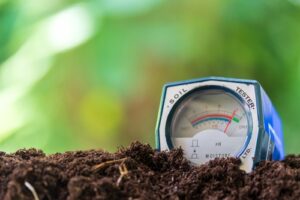
Cannabis cultivators should get in the habit of checking pH levels every day to ensure their grow medium is within these ranges. It’s also important to double-check pH before diagnosing a cannabis plant with a nutrient deficiency.
LED vs. HID — Is There A “Better” Grow Light?
There’s a considerable debate between LED vs. HID grow lights in the indoor growing community. Throughout the 20th century, high-intensity discharge lights were the only reliable option for indoor cannabis cultivators. It took decades of innovation in the LED sector to create diodes suitable for indoor grow set-ups.
Cannabis plants should respond well to LED or HID grow lights, but many new cultivators are swaying towards LEDs. The primary benefit of using LEDs over HIDs is electricity cost. LED panels can produce more powerful lightwaves with less electricity than HIDs. Also, LEDs don’t give off excess ambient heat, which can help cultivators maintain their indoor tent’s temps.
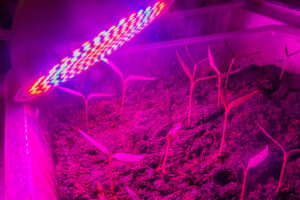
LEDs are also less labor-intensive than HIDs. A high-quality LED will last longer than HIDs, and there’s no need to change out easily-breakable bulbs.
All that being said, that doesn’t mean LED grow lights are always “better” than HIDs. Some cannabis cultivators argue HIDs still produce the best buds, and people who live in cold environments appreciate the extra heat these bulbs give off.
Thankfully, now that LED technology has advanced, consumers have more options in the grow light market. Please review which product fits your budget and space requirements, and take a few moments to compare the average PPFD of light models. This data should help you pick between various LED and HID light models.
Consider Training Techniques During Vegetation
Learning how to “train” cannabis plants is optional, but it’s a simple way to increase your yields dramatically. Taking a few moments to learn just one training technique could maximize your return for all the time and energy you put into cultivation.
Those who are new to cannabis training should start with a strategy called “low-stress training” (LST). Some people also refer to this technique as “bending” since it involves tying cannabis branches to the side of your pot with string. This gentle technique exposes more bud sites to the light source and helps manage your plant’s height. You can learn more about the proper way to bend cannabis plants in our guide to “Cannabis Bonsai.”
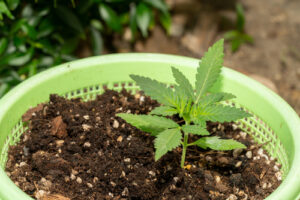
Other popular low-stress techniques include Screen of Green (ScrOG) and Sea of Green (SOG). For ScrOG, cultivators place a flat “screen” over their cannabis plants to help level them out. Just like bending, ScrOG exposes more cannabis buds to your light source.
SOG is significantly different from ScrOG and LST because it relies on a switch in the light schedule. People who use SOG deliberately cut their vegetation light schedule short by a few weeks. This quick swap from vegetation to flowering allows you to grow more photoperiod plants, even in a tiny space. However, SOG is the costliest strategy since you will need to spend extra on seeds and equipment.
Lastly, “topping” is the most common high-stress training technique. To use this strategy, you must cut the “top” cola site on your cannabis plant a few weeks into vegetation. When done correctly, topping a cannabis plant will produce two main colas by harvest time. “Topped” plants also tend to grow more horizontally, which may help more buds lower in the plant get light.
If you choose to use LST, topping, or ScrOG, it’s essential to use them in the vegetative stage. It’s also significant for your plants to be free from any signs of weakness or disease, especially with high-stress training techniques. The more flexible and healthy your plant’s branches are, the more likely they can handle the strain of training.
How To Choose The Best Harvest Time
The best way to tell when a cannabis plant is ready for harvest is to inspect the sticky trichomes. Most cultivators use a jeweler’s loupe to examine their plant’s trichomes early throughout the flowering stage. Ideally, most trichomes will have a milky-white appearance when it’s time to harvest. Once trichomes turn from clear to white, that signals they have the highest levels of THC.
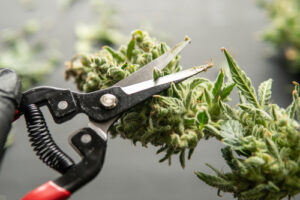
It’s never ideal to snip cannabis buds when there are too many cannabinoid-depleted clear trichomes. Indeed, most people who cultivate cannabis would rather harvest it too late than too early. Although amber-tinged trichomes have higher amounts of CBN than THC, they will have more total cannabinoids versus young buds.
If you need more detailed guidance on this critical stage, be sure to read our previous post on harvesting cannabis.
Still Got Questions? Join The Online Cannabis Community!
As more states recognize cannabis legalization, master cultivators feel more comfortable sharing their tips on weed-focused forums. Indeed, thanks to the World Wide Web, it’s getting easier for novice cultivators to get their questions answered by highly skilled breeders. No matter what strain you’re interested in growing, there’s a chance you could find detailed info on reputable cannabis forums.
If you’re still struggling to grow a batch of weed seeds, be sure to read through reputable cannabis websites. You could also speak with local budtenders or customers at legal dispensaries to learn common pitfalls and solutions to growing this plant. With all these resources, you shouldn’t have difficulty troubleshooting while cultivating cannabis.

Leave a Reply